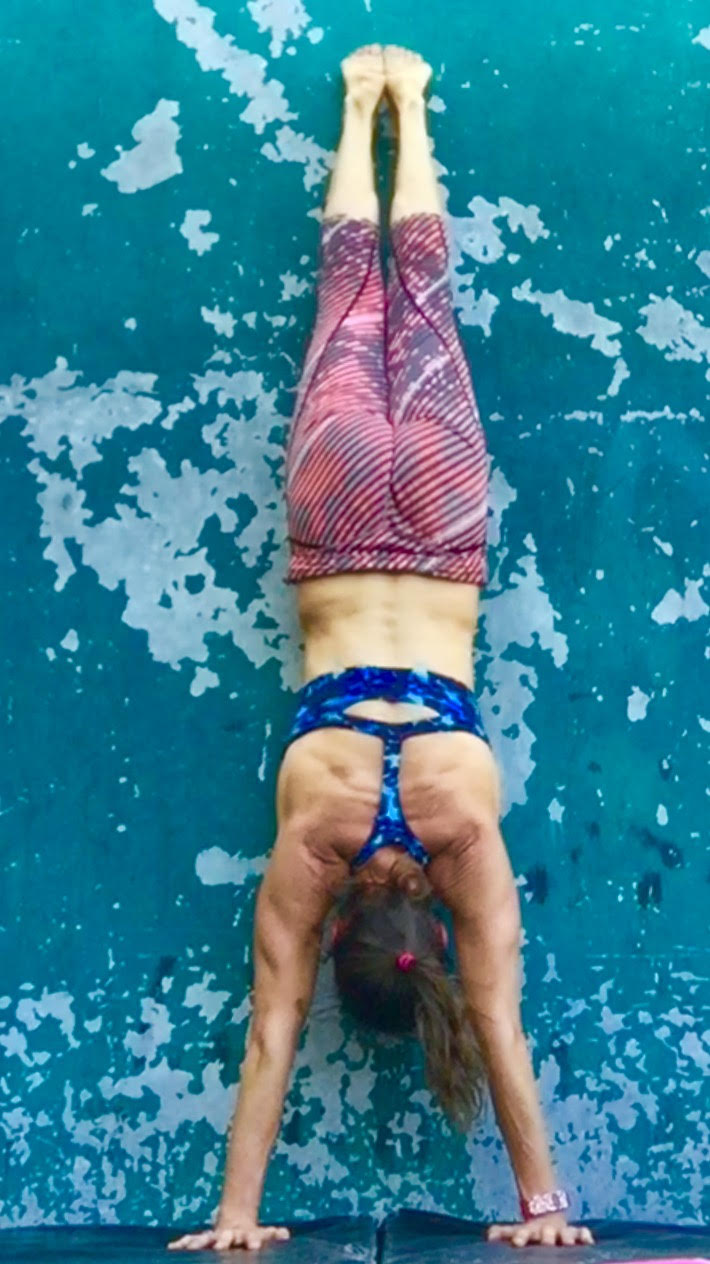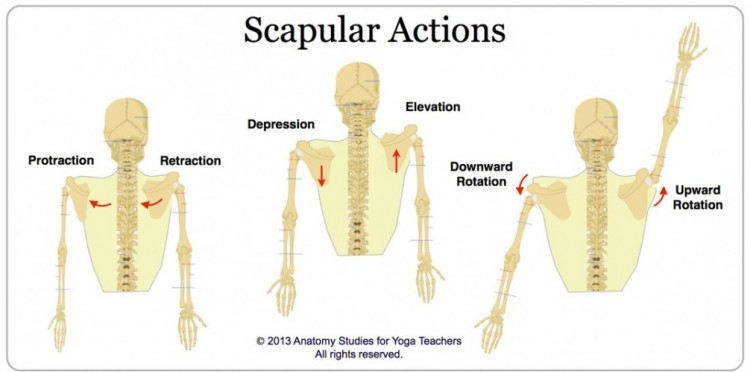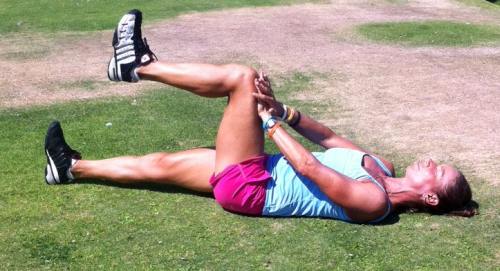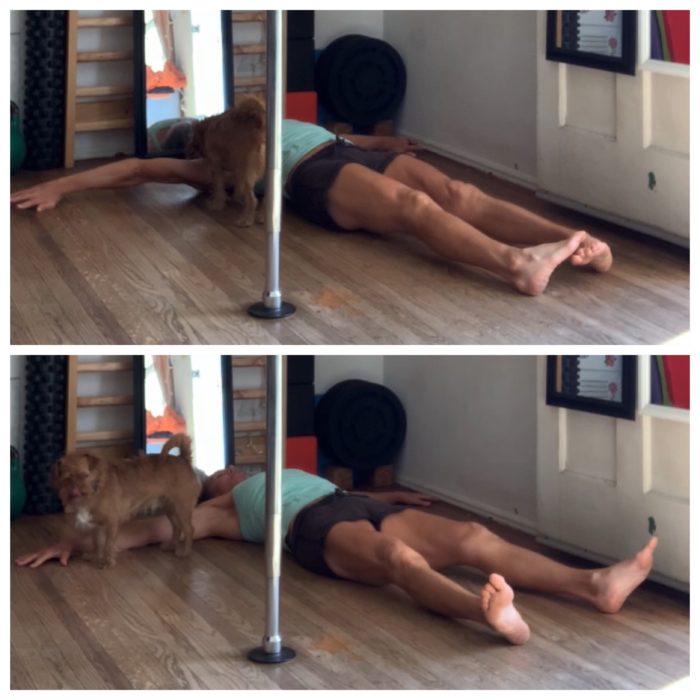Scapulas, better known as shoulder blades, are body parts that we often don’t care much about. You may remember when you were young and your mom was telling you to stand straight and keep a good posture. You lifted your chest up, chin up, and moved the shoulders back. To do so, you squeezed your scapulas together.
Ever since, the muscles in that area has been drastically underused. With all the daily sitting, leaning forward, and hunching the back, these muscles get weak. We pretty much lose control of the shoulder blades.
If the muscles are weak or if you are not used to engaging them, you may strain your shoulders, sooner or later.
The scapula plays an important roll in the shoulder health. It is heavily involved in the shoulder movement. The scapula is hanging between the upper arm and clavicle and is not directly attached to the torso.
Instability of the scapula can cause major shoulder issues. It is important to make sure that the scapula moves within the joint in the full and proper range of motion. Many important muscles connect to scapula: deltoid, trapezius, biceps, pectoralis minor, serratus, rhomboids, and rotator cuff. To ensure proper shoudler stability, you need to work the shoulder in many ways.
The standard pushing exercises (bench press or push-up) won’t do the job. Proper scapular stability needs more than that. You have to do different pulling, pushing and rotational movements. Above all, you need to work the scapular retraction, protraction, elevation and depression.
Besides the strength work, you need to stretch the muscles around the joint. To ensure proper mobility, you need to create a full flexion and full extension.
If your shoulders are weak and you cannot control them fully, be aware of your limitations. Make improving your shoulder strength and scapular control your number one priority. You will have healthy shoulders for the rest of your life. It takes lots of work to keep the shoulders healthy, but it is a rewarding experience.
The Scapulas
The scapulas do in four different movements. They affect all the major muscle groups around, such as back, shoulders, and chest. Be patient with the technicalities about the scapular movements below. You need to know this, because it is going to be important in your future training.

(photo credit BodyParts3D, CC BY-SA 2.1 jp)
1) Protraction
The movement of your shoulders forward, creating a huge hunchback. The scapulas are spreading apart, while you are pushing your back outward. This is also called “abduction” (moving apart).
2) Retraction
This move is the opposite of protraction. You move your shoulders back and push the scapulas together. The feeling is like you want to squeeze a pen between your shoulder blades. This is called “adduction” (moving together).
3) Elevation
The movement of the scapulas upwards. You shrug your shoulders up toward your ears.
4) Depression
This is the opposite of elevation. You press the shoulders down, lowering the scapulas. Depression combined together with the retraction should be your solid foundation.
You can easily practice these movements anywhere, anytime. The easiest way to practice is to combine elevation and depression together. And then move into the opposite, the protraction and retraction combined together. Move back and forth between these, while walking, sitting, standing, or laying around.
Basic Scapular Exercises
Stand in a relaxed posture. Elevate your scapulas high up, hold for one second, then depress them low, hold for one second. Repeat 10–20 times.
Do similar with protraction and retraction. Retract your shoulder blades as far as you can, hold for one second, and protract as far as you can, hold for one second. Repeat 10–20 times.
Make this exercise harder by extending your arms forward. Keep them shoulder-high and straight forward, with elbows locked. Repeat for the prescribed set of repetitions.
This is a simple practice that won’t make you sweaty or overly tired. It is a great beginning to more advanced andchelling scapular moves.
You may find the protraction and retraction much harder than elevation and depression. It is hard to conrol those muscles. Especially if you spend a lot of time sitting at your desk, computer, or the steering wheel. Move slowly and pay attention to not bending the elbows. It is rather surprising how much they will want to help out. Make sure all your movements are clean, which means if you do depression and elevation, do just these too. Don’t hunch (protraction) or push the shoulders back (retraction). Be aware of the movements and be precise.
After a while of practicing, you are going to feel comfortable with all these movements. When you are capable of keeping them clean, you can try to combine them together. Combine depression with retraction and hold for one second. Then move into elevation with protraction and hold for one second. Repeat 10–20 times.
Do these exercises as often as you can. They will allow you to become conscious of your shoulder and scapular engagement.
Keeping your shoulders and scapulas engaged as much as you can will help you to progress fast. But even more so, it will also help to avoid future shoulder injuries.
Advanced Variation of Scapular Exercises
Get down on the floor into a plank with your shoulders directly above the hands. Engage your core and glutes and keep the feet togehter. Now imagine pushing your hands hard to the ground and protract your shoulder blades as much as you can. Hold for one second. Then let your chest sink low and retract the shoulder blades. Keep your elbows straight at all times. They will, yet again, want to assist you in these movements. Especially during the retraction. Repeat 10–20 times.
You can also practice your push-ups with added scapular movement. On the top of the push-up, push the hands to the ground hard and protract your shoulder blades as much as you can.
Hanging protraction and retraction
Hang on a low bar or gymnastic rings. When you extend your arms, you should be just a few inches off the ground. Have your legs straight forward, keep your core and glutes engaged. Now protract your scapulas, hold for a second, retract, and hold for another second.
Weighted elevation and depression
Grab a dumbbell in each hand, or a bar in both hands and lift your arms over your head. Elevate the scapulas as high as you can, hold for one second, depress them, and hold for one second. Here you work against the weight that you hold above your head. Keep your elbows always straight.
Negative elevation and depression
Support yourself on your hands on two parallel bars, or on two chairs or tables. Keep your arms straight and your body vertical. Now do the same motion of elevation, but now you are working against the gravity. Elevate your scapulas as high as you can, hold for one second, and then slowly depress as deep as you can. Hold for one second. Working against the gravity will make this exercises much harder.
Hanging elevation and depression
Hang freely on a bar, arms shoulder width apart. Elevate your scapulas and shrug, hold, then slowly depress the scapulas and hold. Keep your arms straight at all times. Do the movement slow and controlled.
If you would like to learn more about how to stay injury free, buy yourself the simple guide “Tennis Fitness for the Love of it” where you learn the basic, simple techniques how to re-create balance in your body. Or give a gift of health to your friends.
.






